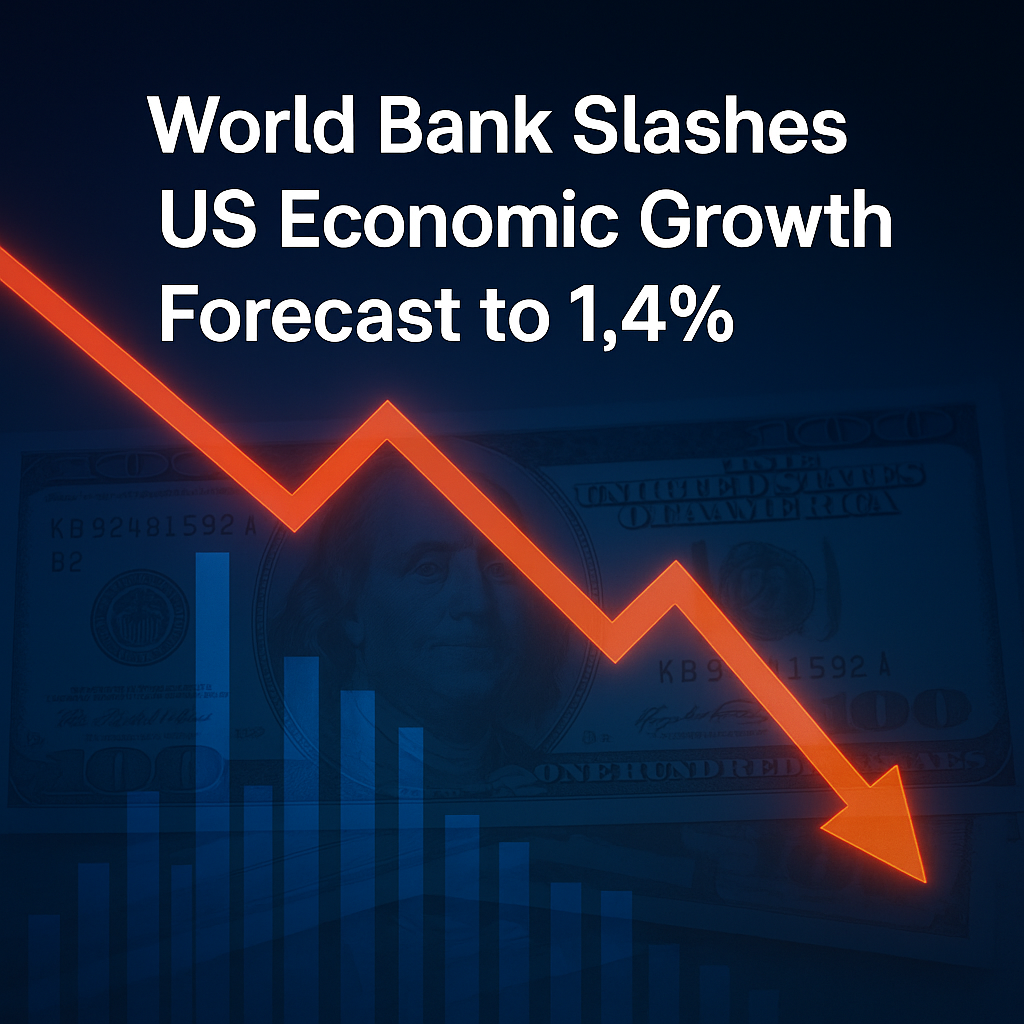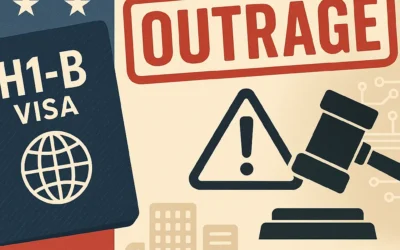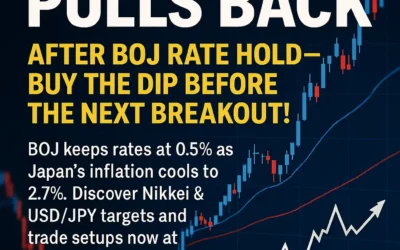In a recent report, the World Bank revised down its US economic growth forecast for the year, slashing it to just 1.4%, down from the initial 2.3%. This significant downgrade comes as the global economy faces numerous challenges, including inflationary pressures, geopolitical instability, and ongoing supply chain disruptions. The revised forecast signals that the US economy may be on a slower path to recovery than initially anticipated, and it has raised concerns about the potential impact on global markets.
What Led to the Revision?
The World Bank’s decision to cut the US growth forecast stems from several key factors that have weighed heavily on economic performance:
- Persistent Inflation: While the US economy has shown resilience in recent years, inflation remains a significant issue. Consumer prices have remained elevated, driven by rising costs in energy, food, and housing. The Federal Reserve’s response with interest rate hikes has not been able to fully quell the inflationary pressures, affecting consumer spending and business investment.
- Geopolitical Tensions: Geopolitical uncertainty continues to affect the global economic landscape. Conflicts, trade tensions, and diplomatic disputes—particularly the ongoing war in Ukraine and its ripple effects on global markets—have disrupted supply chains and raised energy costs, further impacting the US economy.
- Slower Consumer Spending: Consumer spending, which is a key driver of the US economy, has also slowed down in response to higher inflation and interest rates. With the cost of living increasing, households are facing financial strain, leading to reduced spending and a pullback in demand for goods and services.
- Uncertainty in the Labor Market: While the labor market remains strong in many sectors, concerns about a potential slowdown in hiring and job losses in certain industries have increased. If unemployment rises, consumer confidence could be further shaken, and the economy could face a more significant slowdown.
- Global Economic Slowdown: A global economic slowdown—particularly in major trading partners like China and Europe—has affected demand for US exports. A weaker global economy can reduce the demand for American goods, leading to a decline in exports and further dampening economic growth.
What Does This Mean for the US Economy?
A 1.4% growth forecast represents a significant deceleration in economic activity. For context, the US economy typically grows at a rate of around 2% annually under normal conditions. A growth rate of 1.4% would indicate slower-than-usual growth and suggests that the economy is struggling to regain momentum in the face of ongoing challenges.
Several sectors may be affected by this slower growth rate:
- Job Market: Although the job market remains relatively strong, a reduction in economic growth could eventually lead to fewer job opportunities, especially in industries vulnerable to higher inflation and interest rates.
- Stock Market Volatility: A weaker economy often leads to increased volatility in the stock market. Investors may begin to pull back from riskier assets, causing market corrections. Additionally, the Federal Reserve’s interest rate decisions could continue to have a significant impact on market sentiment.
- Consumer Confidence: With slower growth, consumer confidence may decline, leading to further reductions in spending. If consumers tighten their belts, this could result in a slowdown in the service sector and retail industry, which rely heavily on consumer expenditure.
- Housing Market: The housing market, which has experienced substantial growth in recent years, may begin to slow down as mortgage rates remain high. This could lead to lower demand for homes, impacting both homebuilders and the broader real estate market.
Implications for Global Markets
The US economy is a central player in the global economic system, and a slowdown in growth has far-reaching implications for international markets. A slower US economy could lead to:
- Reduced Global Demand: As the US is one of the world’s largest importers, a slowdown in American consumption could reduce demand for goods from other countries, particularly from major exporters like China and the EU.
- Pressure on Emerging Markets: Emerging markets, many of which rely on exports to the US, could face increased pressure as demand weakens. Moreover, a slowdown in the US could lead to reduced investment flows to these economies, potentially exacerbating their economic challenges.
- Commodity Price Volatility: A slowdown in the US could lead to fluctuations in commodity prices, particularly oil and gas, as reduced demand can lead to price drops. However, geopolitical tensions, such as the war in Ukraine, could also drive prices higher, adding complexity to the global market situation.
- Strengthening of Safe-Haven Currencies: Amidst a slowdown in global growth, investors may turn to safe-haven assets like the Swiss franc and gold, as well as US Treasury bonds. This could lead to changes in exchange rates and further market volatility.
What’s Next for the US Economy?
The World Bank’s revision of the US growth forecast reflects the growing uncertainty surrounding the US economy. However, it’s important to remember that the US economy remains relatively strong, with resilient sectors such as technology, healthcare, and energy. The future of the economy depends on several factors:
- Federal Reserve Policies: How the Federal Reserve responds to inflation and economic growth will play a crucial role in shaping the trajectory of the economy. The next few months will likely see continued interest rate adjustments as the Fed seeks to balance inflation control with economic growth.
- Geopolitical Developments: The ongoing war in Ukraine, the global supply chain situation, and trade relations with other countries will continue to impact the US economy. A resolution to these conflicts or new diplomatic agreements could improve market sentiment.
- Consumer Confidence and Spending: The future of the US economy will largely depend on the ability of consumers to continue spending despite rising costs. If consumer confidence remains strong, the economy could recover faster than expected.
Conclusion
The World Bank’s decision to cut the US economic growth forecast to 1.4% signals a period of slower-than-expected recovery. While the US economy is still poised to grow, it faces a range of challenges, including inflation, geopolitical instability, and global economic factors. As a result, both investors and policymakers will need to adjust their strategies to navigate the evolving economic landscape.
For investors, understanding the risks of a slower growth environment is crucial for managing portfolios. Diversifying investments, focusing on defensive sectors, and keeping an eye on monetary policy changes will be important to weather the challenges ahead.
Did you find this article insightful? Subscribe to the Bullish Stock Alerts newsletter so you never miss an update and gain access to exclusive stock market insights: https://bullishstockalerts.com/#newsletter
Avez-vous trouvé cet article utile ? Abonnez-vous à la newsletter de Bullish Stock Alerts pour recevoir toutes nos analyses exclusives sur les marchés boursiers : https://bullishstockalerts.com/#newsletter









0 Comments